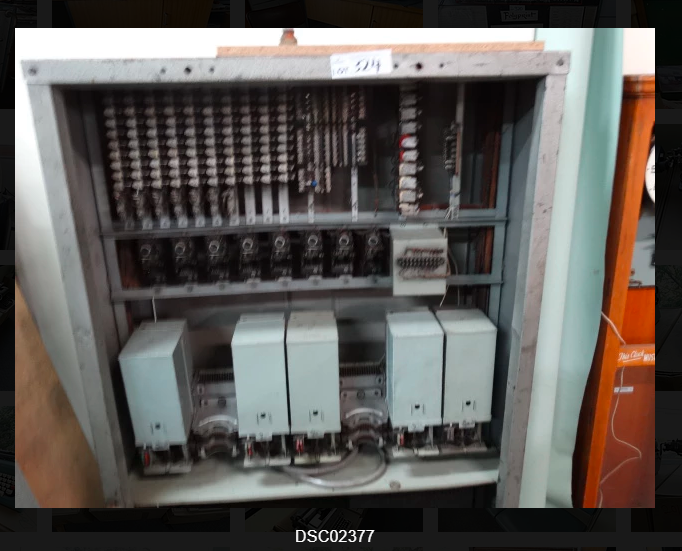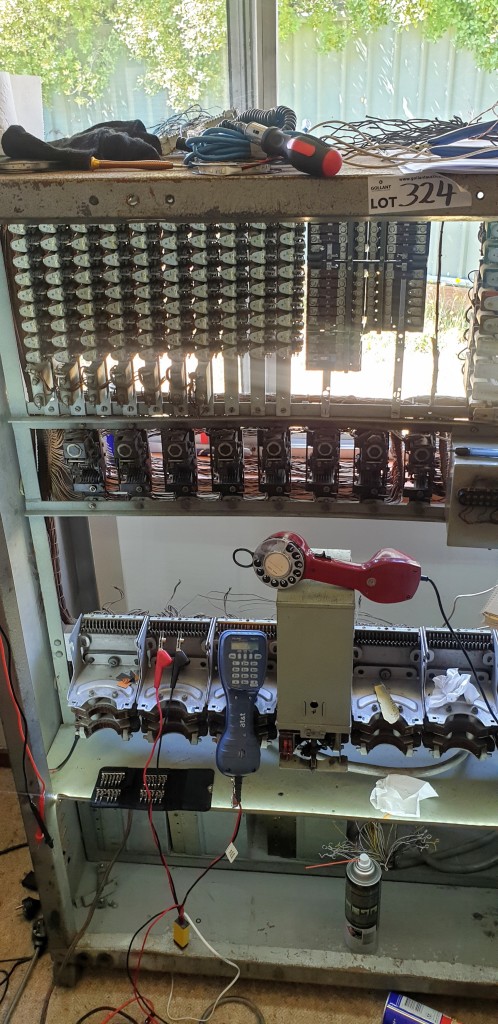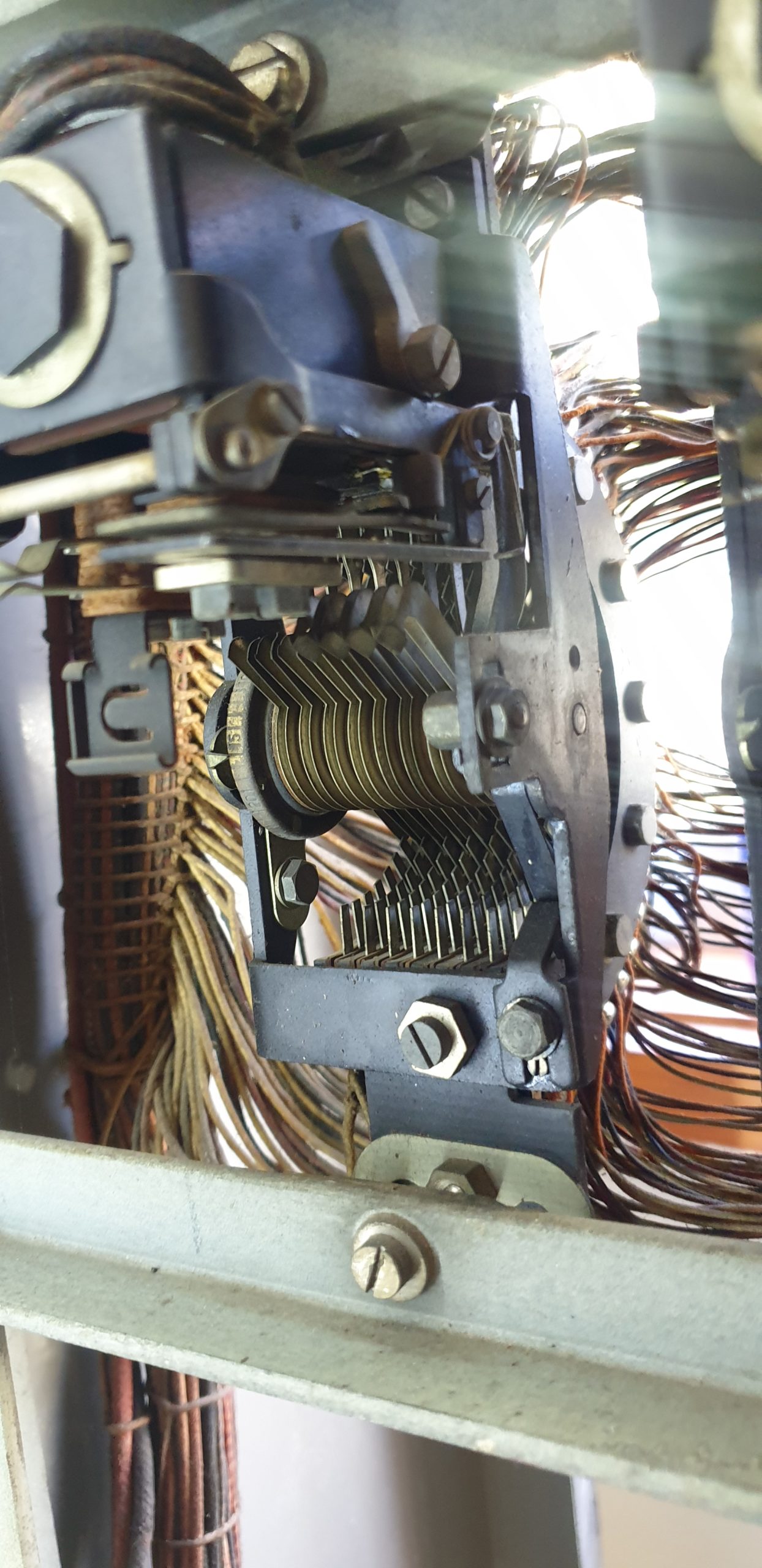Steel Switchboard & Switchgear
That’s all the description said.
The blurry photo didn’t make anything that much clearer, but they looked like two motion switches, and being a big fan of really old telco hardware, I found myself driving to an auction selling things very much unrelated to telephone exchanges to bid on what I thought might have been a step-by-step exchange.

$50 later I am now the proud owner of an Automatic Telephone & Electric Co (ATE) Liverpool works 50 line PAX (Private Automatic Exchange).

My office now has less room, a big burly battery eliminator and ring machine take up the space on my desk, but I couldn’t be happier with it.

Of the 5 final selectors I’ve got two somehow worked “out of the box”, while the other 3 all need some serious adjustment, but she clicks and she’s mostly complete, so should be a good summer holiday project!
I’ll post some video up when she’s fully functional.
Kijk Siebe! Een telefoon centrale met hefdraaikiezers 🙂
I am so jalous, i want one too 🙁
An interesting find. But I think it is a bit later than 1938. The early 50/7A PAXs had black crackle finished cabinets and from mid 1950’s they changed to a silver hammered finish cabinet around the time they re-modelled the PAX to become the ‘ Type 111’ PAX. This was ‘extensible’ to 100 lines and hence had all ten levels on the banks. It continued in production until about 1970 . The Type 112 was the 25 line version extensible to 50 lines. This PAX retained its ‘half’ levels on the banks as only levels 2 to 6 were needed for 50 lines. The Type 113 was the 100 line version ‘extensible’ to 200 lines or 400 lines with a Group selector cabinet.
I have both a Type 111 PAX and a Type 111 PAX that came out of service a few years ago but they both have an additional ‘TL’ relay in each selector to allow repetition of digits out on a ‘Tie Line’ to another PAX. Plus they have been modified to use a small British Post Office Telephones ‘Ringer 2A’ used to give the same tones and cadences as the UK’s public network.
If you are ever in need, I have a huge collection of circuit diagrams/diagram notes/PAX Handbooks for the ATE range of PAXs gathered during my many years with Plessey Communications Systems (sellers/maintainers of the Plessey/ATE range of PAXs) looking after their range of PAXs. Even looked after a very early pre-2000 type PAX from the 1920’s at the early factory of the Telegraph Manufacturing Company at Helsby i Cheshire from where ATM/ATE originated.
We have a few ATE PAXs connected to CNet (Collectors Network) interconnected using VoIP to other old Strowger and other systems around the World including Australia! The Victorian Telecoms Museum in Melbourne are one. I administer the system Worldwide except for North American Numbering Plan Area (Country Code +1) We use the country’s old dialling codes! I have the oldest British Post Office Telephones working Strowger exchange which served a village in the North of England from the 1920’s until it was replaced in 1950. Also got the very last UK public electro-mechanical exchange which came out of service in mid-July 1995. Still dialling two digits to reach each other and untimed local calls until then. Only 20 lines on the system on Britain’s most remote inhabited island – Foula pop. about 30 – way out in the Atlantic to the west of the Shetland Islands – nearer Iceland then London!
Hope that is of some interest,
regards
I could be wrong, but that looks like X-Bar not SxS. Where are the uniselectors? Great find nonetheless. Wish I had one. The earliest tech I worked on was AXE.
I take the first part of my comment back upon closer inspection. The first photo shows the uniselectors, your office photo has them removed.